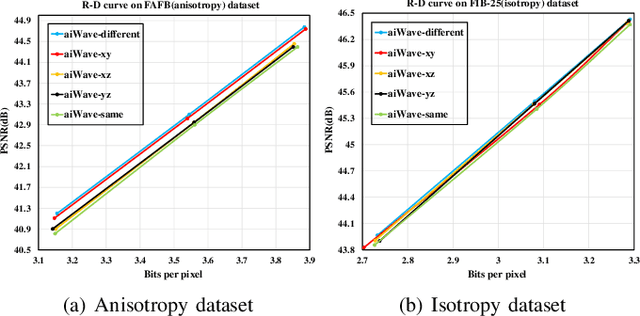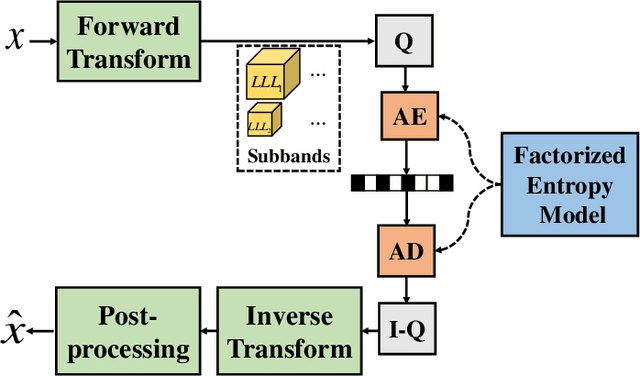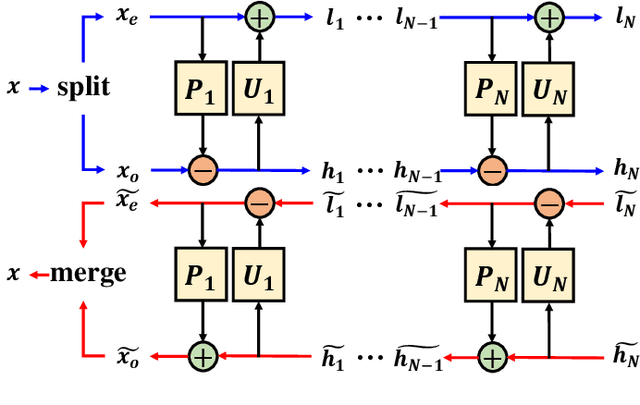Dongmei Xue
aiWave: Volumetric Image Compression with 3-D Trained Affine Wavelet-like Transform
Mar 11, 2022



Abstract:Volumetric image compression has become an urgent task to effectively transmit and store images produced in biological research and clinical practice. At present, the most commonly used volumetric image compression methods are based on wavelet transform, such as JP3D. However, JP3D employs an ideal, separable, global, and fixed wavelet basis to convert input images from pixel domain to frequency domain, which seriously limits its performance. In this paper, we first design a 3-D trained wavelet-like transform to enable signal-dependent and non-separable transform. Then, an affine wavelet basis is introduced to capture the various local correlations in different regions of volumetric images. Furthermore, we embed the proposed wavelet-like transform to an end-to-end compression framework called aiWave to enable an adaptive compression scheme for various datasets. Last but not least, we introduce the weight sharing strategies of the affine wavelet-like transform according to the volumetric data characteristics in the axial direction to reduce the amount of parameters. The experimental results show that: 1) when cooperating our trained 3-D affine wavelet-like transform with a simple factorized entropy module, aiWave performs better than JP3D and is comparable in terms of encoding and decoding complexities; 2) when adding a context module to further remove signal redundancy, aiWave can achieve a much better performance than HEVC.
iWave3D: End-to-end Brain Image Compression with Trainable 3-D Wavelet Transform
Oct 10, 2021



Abstract:With the rapid development of whole brain imaging technology, a large number of brain images have been produced, which puts forward a great demand for efficient brain image compression methods. At present, the most commonly used compression methods are all based on 3-D wavelet transform, such as JP3D. However, traditional 3-D wavelet transforms are designed manually with certain assumptions on the signal, but brain images are not as ideal as assumed. What's more, they are not directly optimized for compression task. In order to solve these problems, we propose a trainable 3-D wavelet transform based on the lifting scheme, in which the predict and update steps are replaced by 3-D convolutional neural networks. Then the proposed transform is embedded into an end-to-end compression scheme called iWave3D, which is trained with a large amount of brain images to directly minimize the rate-distortion loss. Experimental results demonstrate that our method outperforms JP3D significantly by 2.012 dB in terms of average BD-PSNR.
 Add to Chrome
Add to Chrome Add to Firefox
Add to Firefox Add to Edge
Add to Edge